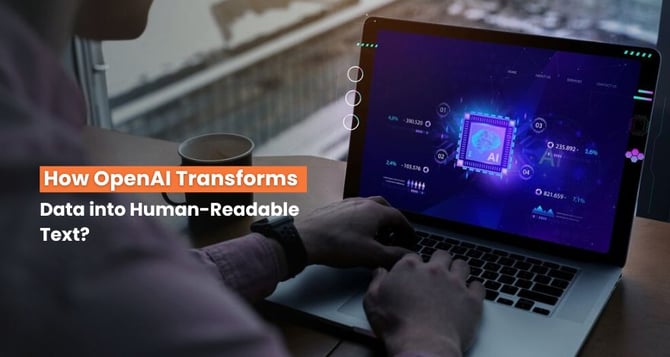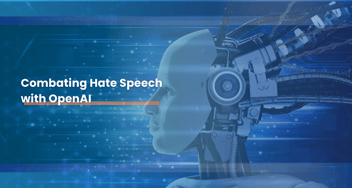How OpenAI Transforms Data into Human-Readable Text?
OpenAI's GPT model revolutionizes data interpretation and decision-making by transforming raw data into coherent, multilingual, and accessible text, marking a significant advancement in artificial intelligence.

In an era characterized by the ever-increasing volume of data, making sense of this information overload is a critical challenge. One of the breakthroughs in addressing this challenge is the development of AI models capable of transforming raw data into human-readable text.
OpenAI, a leader in artificial intelligence research, employs a cutting-edge technique known as GPT (Generative Pre-trained Transformer) to accomplish this feat, particularly within the context of ChatGPT Development.
In this article, we will delve into the process by which OpenAI transforms data into human-readable text.
Process of Transforming the Data:
1. Training the GPT Model
At the heart of OpenAI's data transformation process lies the GPT model. Training GPT involves exposing it to an extensive dataset comprising diverse human-written text from the internet. This dataset serves as a vast knowledge base from which the model learns language patterns, grammar rules, facts, and contextual understanding.
2. Tokenization
The journey from raw data to human-readable text begins with tokenization. Text input is divided into smaller units known as tokens. Tokens can be as brief as a single character or as lengthy as an entire word. This segmentation enables the model to process and understand text at a granular level.
3. Contextual Understanding
What sets GPT apart is its ability to comprehend words in context. Rather than analyzing tokens in isolation, GPT considers the entire context of the sentence or paragraph. This contextual understanding is a key factor in generating coherent and meaningful text.
4. Generating Text
When a user provides a prompt, GPT goes to work by predicting the most probable next token based on the provided context and its pre-trained knowledge. This prediction is repeated sequentially to generate a sequence of tokens that form a coherent piece of text.
5. Sampling and Post-processing
To ensure the quality of the generated text, GPT employs sampling techniques. It generates multiple possible text sequences and selects the one that is the most coherent and relevant. Post-processing steps, such as capitalization, punctuation, and formatting, are then applied to enhance the readability of the output.
6. The Output
The culmination of this process is the transformation of raw data into human-readable text. Users interact with GPT through prompts, and the model responds with informative, contextually relevant text, making complex data more accessible and understandable.
Enhancing User Experience
1. Interactive Interfaces
Showcase platforms or applications where users can interact with GPT. Discuss user interfaces that facilitate seamless communication with the model.
2. Customizability and Specializations
Explore the customization options available with GPT. Discuss how it can be fine-tuned for specific tasks or industries, enhancing its adaptability.
3. Multilingual Support
Highlight GPT's multilingual capabilities, emphasizing its role in breaking language barriers and making information accessible across diverse linguistic communities.
Challenges and Ethical Considerations
1. Biases in AI-generated Text
Discuss the potential biases in AI-generated content. Address the challenges of ensuring fairness and inclusivity in the output.
2. Ethical Usage and Transparency
Explore the ethical implications of transforming data into human-readable text. Discuss responsible AI usage, transparency in algorithms, and the importance of informed consent.
Empower Your Business with AI Innovation
Get custom AI solutions and recommendations as per your unique business requirements!
Conclusion
OpenAI's approach to transforming data into human-readable text through the GPT model represents a significant stride in the realm of artificial intelligence.
It has the potential to revolutionize how we handle and interpret vast amounts of data, providing valuable insights and facilitating better decision-making.
As OpenAI continues to refine and improve its models, the future holds even greater promise for data transformation and human-AI collaboration.


%201-1.webp)


.png?width=344&height=101&name=Mask%20group%20(5).png)
















